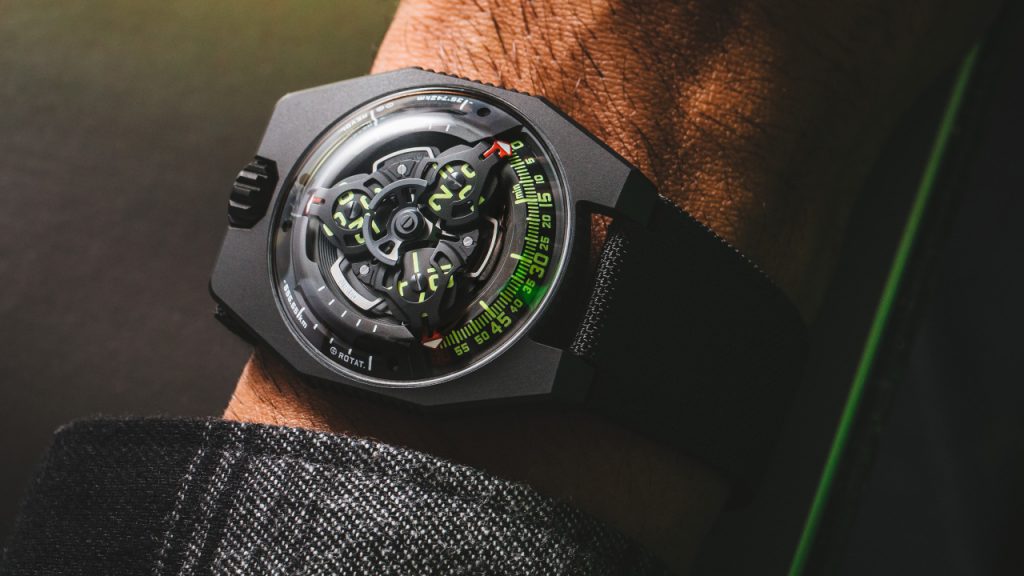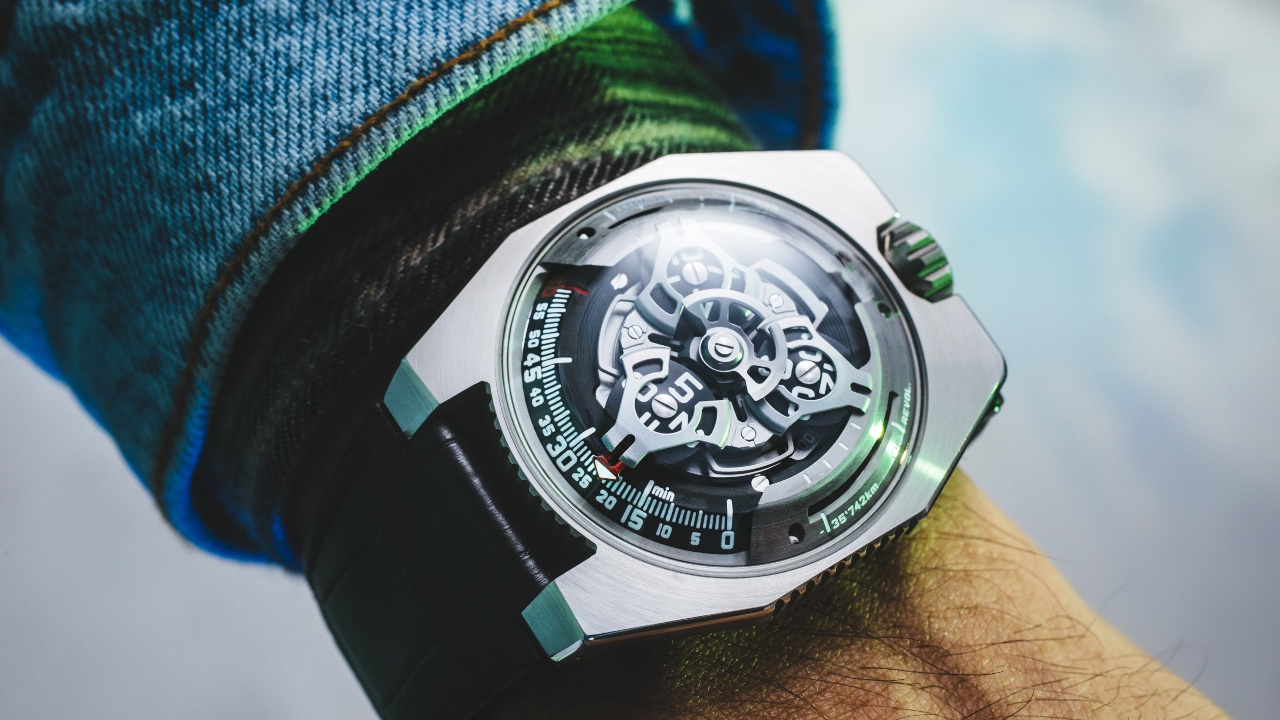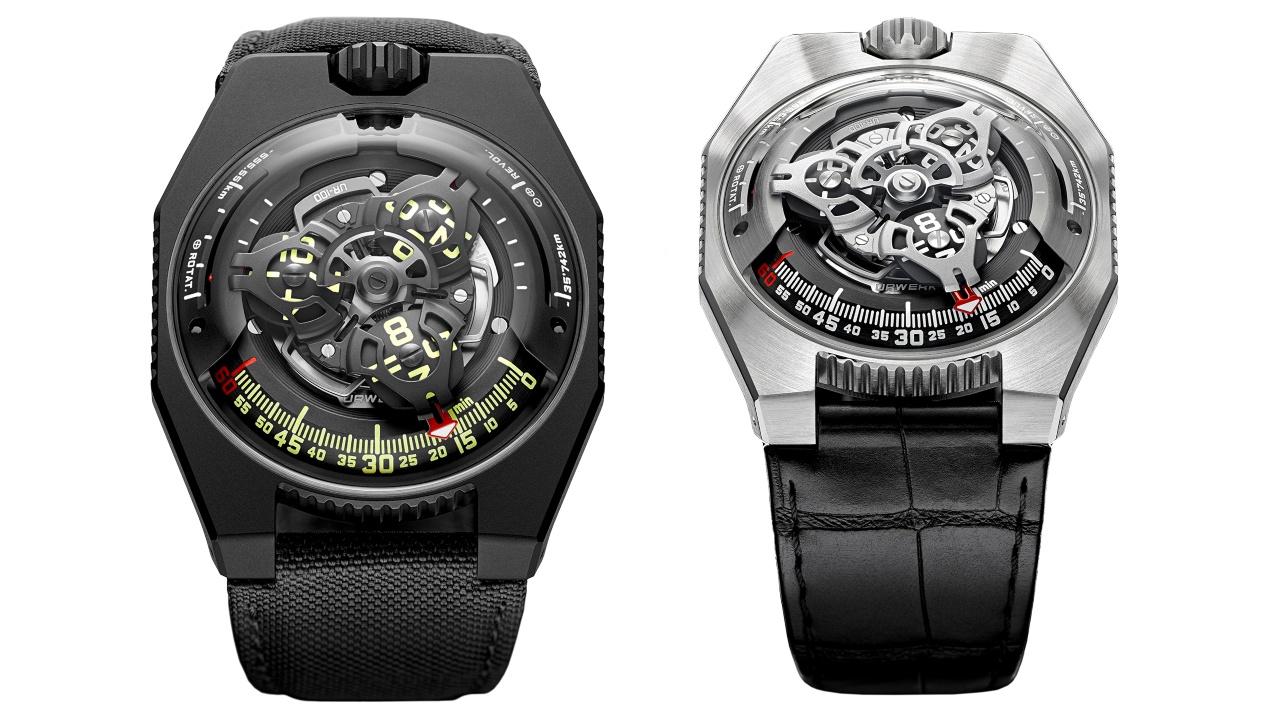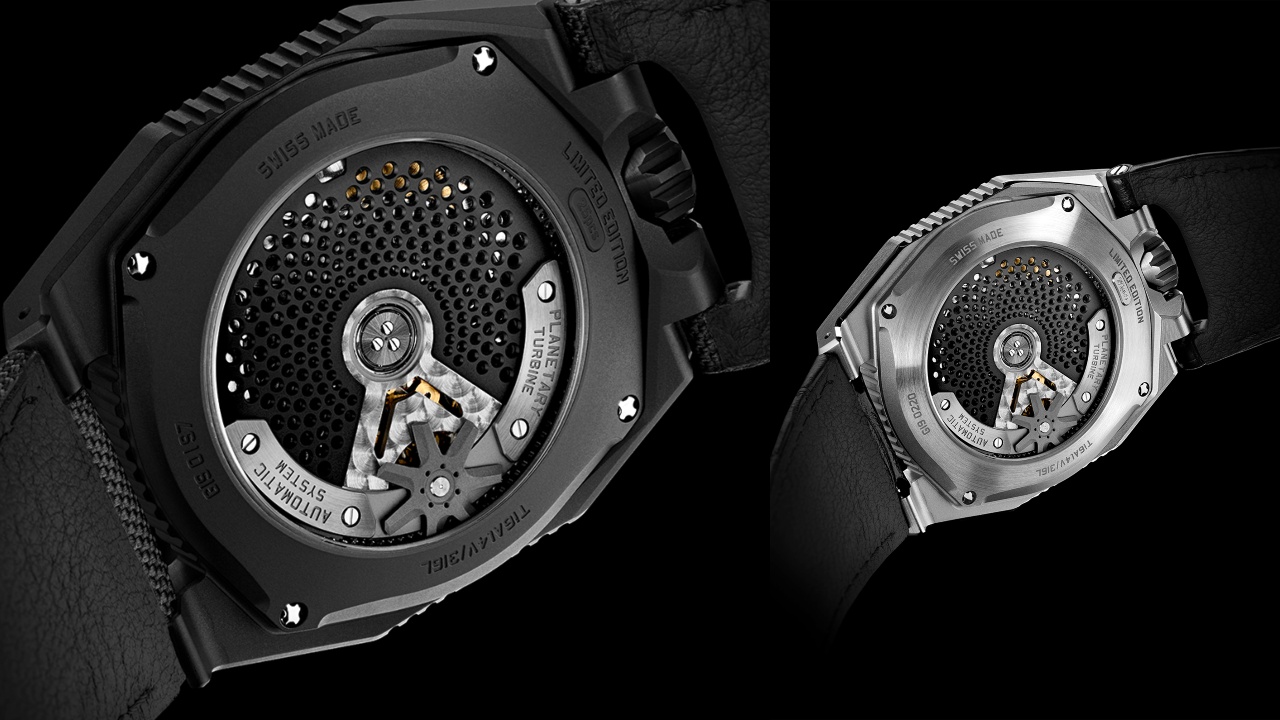Back in 1893 at the World’s Fair in Chicago, Gustave Sandoz – France’s 3rd Royal Marine clockmaker – created a pendulum clock which didn’t show the time, but instead the distance of the Earth’s rotation at the equator. The pendulum’s beats at intervals of 2.16 seconds – with a full oscillation completed at every kilometre – indicated the distance in which one would have “travelled” in that precise space in time, simply by standing on the same spot as Earth did its thing. The short version of this story is that may years later, Geri Baumgartner – a retired clock restorer – made the fortuitous purchase of this extraordinary clock, and his son Felix, who co-founded independent timepiece brand Urwerk, soon found his inspiration for his next horological invention. Late this year, Felix Baumgartner finally unveiled the UR-100 wristwatch (CHF48,000 or about RM200,654), inspired the Sandoz’s creation. On a first viewing, Urwerk’s iconic orbital hour satellites catches the gaze, its aluminium and titanium constructed hands requiring 150 times more power to move than standard hands.
Having satisfied its primary purpose to tell time, the UR-100 then proceeds to open a new arena for haute horlogerie – that of space-time. Its automatic Caliber 12.01 powers this new complication – one best described as “distance travelled on Earth” and “distance travelled by Earth”. At two and ten o’clock of the UR-100, the distance is broken down by time indications, every 20 minutes equals to 555km travelled in terms of the Earth’s rotation on its axis. What is perhaps even more phenomenal is its celestial indication – one which indicates how quickly the Earth is hurtling on its orbit around the sun. The distance in 20 minutes? 35,740km. “These indicated realities show the fact that we are all space travellers,” Baumgartner remarks.
Encased by a 41mm wide by 49.7mm in length case of PVD-coated titanium and stainless steel, the UR-100 has, for the first time, integrated the world’s first planetary turbine to absorb shocks to the self-winding mechanism thereby reducing over-winding and wear. This turbine, with its evocative name of Windfanger (Swiss German for “air trap”), rotates six times for every complete rotor oscillation, dissipating surplus energies.
“We’re still a small family and as a watchmaking laboratory, focussed on research,” Baumgartner muses on what the UR-100 means to Urwerk. “And even as we open new categories in haute horlogerie such as space-time, our power and motivation comes from our continuing desire to remain curious and innovate.”












